
















Afascinating first-hand accountofhow Afascinati nd ac four ‘S160’ locoswerelostatsea in WW2 fo lo










































SAVE 29% OFF THE COVER PRICE TURN TO PAGE 24 FOR DETAILS


















Afascinating first-hand accountofhow Afascinati nd ac four ‘S160’ locoswerelostatsea in WW2 fo lo










































SAVE 29% OFF THE COVER PRICE TURN TO PAGE 24 FOR DETAILS
May 2025. No.1,490.Vol 171. Ajournalofrecordsince1897.
8 Headline News
Governmentbacks moreopen access operators.
50 Steam News
GreatCentral operations unite; Bodmin gala first sincepandemic; Cotswold Festival of Steam line -up
55 Industrial Steam Stephenson Museum acquirestwo locomotives.
56 Heritage Carriages &Wagons Spring spruce-up forBeamish vehicles
58 Narrow Gauge
Talyllyn Railway reworks itsplans forPendre.
64 Miniature New owners forEastleigh Lakeside Railway
65 Heritage Trams
Areturn to ser viceafter nearly acentur yout of traffic.
66 Classic Traction
Visitors galorefor three spring diesel gala events
68 Railtours
Colas ‘Grid’will go off to the English Riviera.
71 Freight
Freightoperators meet Tata Steel’s needs inWales.
72 Metro
Over 50 million Metrolink trips using ‘tap and go’.
74 Network New designs forLiverpool Street redevelopment
76 Traction &Stock and Wagons
Batter y-poweredClass 230unit takes the highload
79 Stock Update
Namings,reallocations,scrappings,sales and more.
80 Operations News
Notable movesfromaround the countr y.
87 Irish
No.171 makes main line return after23years away
88 World
French ‘Type 4’ is back with public char terdebut
24 Subscriptions Offer
Thebest wayto receive The RM ever ymonth.
40 Readers’Platform &Where is it?
Behind the scenes making the ‘Is Line Clear ’film
42 Meetings
Talks and events happening near youthis month.
43 Years Ago
Newsfrom The RM 100, 50, and 20 years ago
45 Panorama
Astunningselec tion of railway images
91 Reviews
Threenew booksfor the railway market
98 Crossword&NextMonth
Tr yyour hand at ourpopular prizepuzzle
20 Then therewerefour
Dr Joseph Brennan brings our series covering Britain’s railway histor yintothe 20thcentur y, when theimpactofthe First World Warsaw railway amalgamation reach its most famous form as 120 separatecompanies were grouped intothe ‘BigFour’.
26 Practice&Per formance
Those heading west from Paddington to Cornwall can get therequicker on the summer-dated 12.03 depar ture, whichreaches Plymouth in under three hours afteranonstop run to Exeter,asJohnHeaton FCILTdescribes
32 Torpedoed!
Four S160 Class locos were lost at sea in April1943, while crossing the Atlantic to Britain as par tof the wareffort.Paul Bickerdyketells the tale,and presents afirst-hand accountofthe sinkingfrom the captain of the cargo vessel torpedoed by a German submarine
39 Thefirst railway photo?
Thedevelopmentofrailwaysand photographyran in parallel but,asPhilMarsh asks,does anyreader know of an earlier shot than these?














Produc tion editor: SarahWilkinson
Designer: TimPipes
Editorial assistant: Jane Skayman
Publisher: TimHar tley
Sales and distribution manager: Carl Smith
Head of Marketing: CharlottePark
Commercial direc tor: Nigel Hole
Publishing direc tor: Dan Savage
Published by: KelseyMedia Ltd, Media Centre,Mor tonWay,Horncastle,LincsLN9 6JR Tel: 01507 529529 Fax: 01507 371066 Email: railway@mor tons.co.uk
ADVERTISING
Group adver tising manager: SueKeily
Advertising: Andy Bruce abruce@mor tons.co.uk Tel: 01507 529455
By post: TheRailway Magazine adver tising, Kelsey Media, Media Centre,Mor tonWay, Horncastle,Lincs LN9 6JR
SUBSCRIP TIO NS
Full subscription rates(but see page24for offer): (12 months,12issues,including post and packing) £66 forthe UK.Expor trates arealso available,see page24 for moredetails.UKsubscriptions arezero-ratedfor the purposes of Value Added Tax.
Enquiries: subscriptions@mor tons.co.uk
CUSTOMER SERVICES
General Queries &Back Issues 01507 529529
Monday-Friday: 8.30am-5pm Answerphone 24hr help@classicmagazines.co.uk www.classicmagazines.co.uk
Archiveenquiries
Jane Skayman 01507529423 jskayman@mor tons.co.uk
PRINT AND DISTRIBUTION
Printed by: William Gibbons &Sons Ltd. Magazine &Catalogue Printer, 26 Planetar yRoad, Willenhall,West Midlands,WV13 3XB
Distribution by: Seymour Distribution Ltd, 2Poultr yAvenue,London,EC1A 9PU Enquiries Line: 0207 429 4000
Accepted photographs and ar ticles will be paid for upon publication. Items we cannot use will be returned if accompanied by astampedaddressed envelope,and recorded deliver ymust clearly state so and enclose sufficientpostage.Incommon with prac ticeonother rail periodicals,all material is sent or returned at the contributor ’s ownriskand neither TheRailway Magazine,the editor,the staffnor Kelsey Media Ltdcan be held responsible for loss or damage, howsoever caused.The opinions expressed in TheRM arenot necessarily thoseofthe editor or staff.This periodicalmust not,without the written consentof the publisher first being given, be lent, sold,hired out or other wisedisposed of in amutilatedcondition or,in anyunauthorised coverbyway of trade or annexedto or as par tofany publication or adver tising,literary or pic torial matter whatsoever
HOWTOSUBMIT
Please email high-resolution digital images in jpg/jpeg or tiff formattormpix@mor tons.co.uk Send only unprocessed and ‘straightfromthe camera’ images,and include basic details of ‘what, whereand when’plus the photographer ’s name in theimage’s file name.Ifpossible,embed afull description in the image’s ‘File Info’sec tion.
CDs or memor ysticks can also be accepted by post
This issue waspublished on May7,2025. Thenextissue will be on saleonJune 4, 2025. ©Kelsey Media ISSN0033-8923
KELSEYmedia
WITHthe Government set to bringmoreof theformerpassenger rail franchises back underpublic control, beginninglater this month with SouthWestern Railway, theprivate firmsthathavebeen runningthemare increasingly lookingtoopenaccessoperations as away forward.
Thelikes of LNER ,Northern, TransPennineExpressand Southeastern have,for various reasons, been underGovernment controlvia theDepartment for Transportfor some time now. But theremaining former franchises areset to join them in turn as their current contractswithprivate operators runout.
It wouldbefairtosay that thoseoperationsalready under Government controlhavebeen performingwell, or at leastbetter, than theirlatterdaysinprivate hands. Butbringing allofthem back into public ownershipisnot entirelywithout drawbacks– for example, additional costssuchas rollingstock leasingguaranteeswill nowbeonthe Government’s books andsopotentially adding to the national debt.















That said,private firmslike FirstGroup andArrivaare viewing open access services as thefuture, andsothe Office of Rail andRoadis seeing awaveofnew applications to runsuchservices.
Open access is adivisiveissue
On theone hand,passengers benefitfromthrough services that were limitedornot availableatall before,suchassomeofthe stations served on routes from King ’s Cross by Hull Trains,Grand Centraland Lumo.But on theother,critics say infrequent open access services disruptthe timetableand abstract revenuefromthe main operators. Open access operations have been around sincethe year 2000, so arguably must be doingsomething right, andtheyoften scorewell in passengersatisfactionsurveys too. At theveryleast then,theyare keepingthe mainstream operators on theirtoesand,inbacking an expansionof them,the current Government seems to agree.
































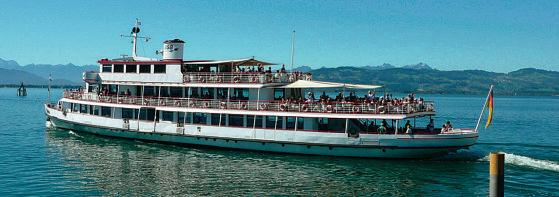












Adramatic viewofthe Cumbrian Coast Line at Nethertown on April 5, as aNor thern Class 156DMU heads away towardsCarlisle just before the line wasclosed between Whitehavenand Sellafield to allowemergenc yser vicestotackle the lineside fires thathad been caused by ‘Battle of Britain’ Class No.34072 Tangmere passing withthe NorthernBelle. ROBERT FA LCON ER













Tangmere is pictured on the approachtoWhitehavenbeforecausing the lineside firespictured above. TheNorthern Belle wasreturning from Carlisle to York,but was halted at Sellafield until it wasdecided thatdiesel No.57313 (outofviewatthe rear) would push the train to Carnforth, wherethe steam locowas replaced by No.57601. No.60532 Blue Peter wasalso due to pass thisway with thereturnleg of its ‘Lakelander’tour from Carlisle backtoLlandudno Junction, but wasturned aroundatWigton anddivertedalong theWest Coast Main Line instead,with Class 40No. D213 (40013) Andania in charge,No. 60532 running separately to Crewe. TOMMCATEE
Transpor tSecretar yHeidi Alexander has confirmed thereisa continuing placefor open access operations,and thatapplications areencouraged fornew journeyopportunities.
By ‘IndustryUpdate’
BESIDES Heathrow Express,for along period the case foropen access has only been made for East Coast operations –inpart because significantpopulation centressuch as Hull,Sunderland and Bradfordhad been poorly servedbythe franchised operators
Abig hurdle to securing track access rights wasthe sentiment thatsuch operations cause revenue abstraction, leading to areduction in the value of franchises and the abilityto makepremium payments to the Government. But since theCovid pandemic,these are circumstances thatnolonger exist.
Looking ahead,the emphasis is on improved rail connectivity, with the economic and environmental benefits that brings in terms of access to employmentand education, as well as reduced traffic congestion and improving air qualityinpopulation centres. Thereare anumber of new services in the pipeline that have received regulatory approval.Until now, it has proved difficult to justify providing new rolling stock for these services,asinevitably it takes time forpassengers to change theirtravelpatterns to a level of demand thatjustifies a commitmenttonew vehicles.
Rolling stock constraint Themuch-delayedappearance of open access services between Carmarthen and Paddington, which offer adifferentstopping pattern to established Great Western services on the route plus aspeed-up of longer distancetimings,isacase in point.
An original application by Grand Union Trains wasmade in 2021 thatwas based on using Class 91+Mk.4 trainsets thatwouldoperatebetween Cardiff and London until suitable bi-mode rolling stock could be acquired to allow the trains to startback from Carmarthen. This initial proposal
wasrejectedby the OfficeofRail andRoad (ORR) giventhe level of revenue abstraction without the improved connectivityfor destinations in West Wales
Theapplication was then refreshed so thatthe newserviceswouldserve Carmarthen from the startand, in an ORR decision letter dated December 1,2022 approval was givenfor theoperation of five rather than seven daily return services fora10-year period from an expectedstartdateof December 2024. Agreementhas sincebeen reached to defer the startdatetoawait the arrival of Hitachi trainsets recently ordered by First Group using the previously identified paths In confirmingthattrack access rights would be granted, the ORR made the pointthat it is supportiveof open access, as it reflects the dutyishas to promotecompetition forthe benefit of rail users.Open access can also actasa stimulus to innovation and service quality, both from the new entrants and the response it prompts from existing operators.This view wasalso supportedbyTransport forWales

between Stirling and Euston.
Theapproval is limited to a five-year term from this June to June 2030, which is ashort period of time to build up new travel patterns on aroute unfamiliartopassengers.In part, this is because Network Rail advised that, although thereisexisting capacity, future interaction with HS2 could makethe situation uncertain beyond the end of 2030.
“The ORR said it would not beappropriate to turndownnew passenger ser vices just because of the use of diesel traction”
Open access innovation has been demonstrated by Lumo on the East Coast Main Line, whose services weredesigned to attractusers of domestic flights and low-cost airlines. The initiativehas been successful,as the Civil Aviation Authorityhas reportedasignificantmodal shiftawayfromair between Edinburghand London,with the rail market sharerising from 33%to57% afterthe first year of operation.
West Coast case
Another recent open access approval in March2024 provided accessrights forGrand Union Trains (GUT )tooperate four daily return services
TheGUT trains from Stirling are not routed via Glasgow, but instead serve a number of stations in centralScotland before reaching Motherwell,after which thestopping pattern is at Lockerbie,Carlisle,Preston, Crewe, Nuneatonand Milton Keynes.Inaddition to new journey opportunities,the ORR acknowledged the potential benefit of introducing competition on the West Coast route.
Theavailabilityofeither offlease Class 221 ‘Super Voyager’ or Class 222 ‘Meridian’DMU trainsets will be the source of rolling stock,but the slow introduction of replacement West Coast and Midland Main Line rolling stock has brought delaytothe startdate.
Therewas areaction against the choiceofrolling stock, with Transportfor Greater Manchester stating thatdiesel powerwas regrettable from a
carbon emission and air quality perspectivegiven much of the routeiselectrified.This sentimentwas also expressed by TransportScotland,which supportedthe services given improved connectivity, but would have preferred theuse of electric traction wheresuitable infrastructurewas available In response to these concerns, the ORR said it would not be appropriate to turn down new passenger services because of the use of diesel traction, especially on aroutewhere therewereknown power supply constraints.Also,the anticipatedmodal switch from air to rail travel would provide sustainabilitybenefits.
Lowstart-up costs
In allcases,providing competitiveservices must demonstratethatthey arenot primarily abstractive, anda benchmark ratio is set at 30p of newrevenue for£1ofincome Forexample, the Stirling service demonstrated aratio of 38p aftereconomic assessmentby the ORR, but the business plan forecast assessed by Grand Union wasashigh as 49p Abstraction, mainly from Avanti West Coast,was estimatedat £24.4 million beforethe boost to rail awareness thatcompetition brings.
When opportunities are identified to introducenew open access services,the initial challenge is to put together an outline business case that identifies thatnetwork capacity and suitable rolling stock are available
To date,the only initial application fortrack access rights to include new rolling stock has been Lumo,where whatwas proposed represented alower financial risk giventhat its operations were over an existing routewhererail held a relatively lowmarket share.
In the early days of Hull Trains, it wasable to agreeadeal with Anglia Railwaysfor Class 170 DMUs, while Grand Central wasable to acquire surplus, non-standard HST train sets fitted with aconventional buffer beam.
But it wasthe failureto acquireintendedClass 158 DMUs, andthe subsequent need to use expensive locomotivehauled trains instead,thatinflatedthe cost of running Wrexham and Shropshireservices in 2008, eventually resulting in the servicebeing withdrawnin 2011. Theproposal wasrevived last year and gained regulatory approval based on running faster timings to Euston rather than Marylebone,and by using morecost-effective‘Voyager’ DMU rolling stock
Another intended service thatreceived regulatory approval wasfor services between Blackpool and Euston using cascaded locomotivehauled vehicles following the introduction of ‘Azuma’ trainsets on the East Coast Main Line. Despitebeing at an advanced stage of mobilisation, it was due to start when the Covid pandemic hit,leading to a decision by Arrivatoabandon the project.
Nor th East to South Coastproposals followconfirmation of a£300 million deal with Hitachi fornine five- car tri-mode units to replacethe open access operator ’s existing fleet
By Graeme Pickering
ARRIVAGroup-owned open access operator Grand Centralis to replaceits fleet of diesel trains with nine five-car tri-mode units (capable of running on electric, diesel or batterypower),which will be builtatHitachi Rail’s factory at Newton Aycliffein County Durham.
Announced on April 3, the £300 million order is to be financed by Angel Trains.Ithas agreed a10-year lease of the sets with GC, which currently runs services linking Sunderland and BradfordInterchange with King’s Cross and,earlier this year,had its track access rights extended until 2038. Thetrains aredue fordelivery
in 2028 and will supersede the operator’s 10 five-carClass 180 ‘Adelante’DMUs, whichare also leased from Angel.The ‘Adelante’ fleet is currently augmented by former Avanti West Coast Class 221 Nos.221142/143, drafted in forBradforddiagrams during 2023after the‘180’ availability slumped because of defective trains
Arrivasaysthe new trains will increase seating capacity on GCservices by 20%,reduce fuel consumption by 30%and also lead to loweremissions and noise levels,switching to batterymode to enterand depart stations on nonelectrified routes.
This is Hitachi’s first order for sucha traction package in the



UK,and follows network trials last year involving Angel-owned TransPennine Express bi-mode (electric and diesel) Class 802 No.802207, which wasretrofitted with a700kW batteryinplaceof one of its three diesel engines.
South Coast plans
On April 25, Arrivaannounced submission to the Officeof Rail &Road of an application to run fivedirectGCtrains per

FOLLOWING asuccessful main line test run between Hellifield and Carnforth on March26, thenew-build ‘A1’ No.60163 Tornado movedtoShrewsbury on April 3for testing to begin on the locomotive’sonboard European Train ControlSystem (ETCS) equipment. This marks three significant events in one: Theloco’s mainline return; the testing of the world’s first steam locomotivetobecome digitally signalled; and steam running on the Cambrian line forthe first time since2010.
Vice-presidentofHitachi Rail Andy Bell highlighted combining the best of past and present, saying: “This very
special projectdemonstrates not only the adaptabilityof Hitachi Rail’s system, but also what’spossible when we respectthe past while designing forwhat’snext, combining engineering expertise with deep,trusted partnerships across the industry.”
Thenew equipmentincludes asecond steam turbogenerator, an axle-driven alternatorand a thirdbattery bank.
Test runs at nightreached Welshpool and Newtown, with NRsignaller John Rogers onboard, the former local operations manager at Machynlleth duringthe introduction and development of Cambrian ETCS in the 2000s
dayinboth directions between Newcastle and Brighton.
With the launch intended as early as December 2026, en routeitproposes to serve Durham, Darlington, Northallerton, York,Doncaster, Sheffield,Derby, Burton-onTrent, Birmingham New Street, Warwick Parkway, Banbury, Oxford,Reading,Wokingham, Guildford, Redhill,Gatwick Airportand Haywards Heath.
A£200 million projectisunder waytoconvert the Grade -II listed SER Works in Ashfordintoa residential,retail and film studio development. Theformer locomotivebuilding shops is pictured on March26, wherepermission has been granted forthe roof to be removedand the entirelength along the middle of the building (between the arched walls) to remain open to the elements as alandscaped thoroughfare.Afur ther new build of twofloors of commercial and residential developmentwill then rise above the remaining flanking walls on either side. DAVID STAINES
Thecompany is also awaiting the outcome of applications to operatetwo additional daily return services between Bradfordand London, an early morning York-London and late evening return, as well as four dailyreturn services linking Cleethorpes and Grimsbywith the capital.
AmandaFurlong,managing directorofArrivaUKTrains, said it looked forwardto announcing further train orders “asand when our network grows”
■ TheRail Safety &Standards Boardhas made rule book and standards updatestoinclude new requirements,guidance and signage regarding power changeoverlocations for multi-mode trains.Based on operational experiencegained sincethe previous,moregeneral rules were written, these aim to reducefailed changeovers and incidents involving pantographs, as well as improving operational performance.

FEWER companies will be involved in operating Railhead TreatmentTrains (RHTT) from this autumn.
Network Rail announced on April 28 thatafiveyear deal to 2030 will see Freightliner run the MPVbasedtrains in the North and Balfour Beatty handling those in the South.
Locomotive-hauled RHTT sets will be split between Colas and GBRf,with each operator running different circuits
DirectRail Services confirmed to TheRM in April that it would no longer be undertaking RHTTduties, while DB Cargodeclined to commentahead of the announcement.
Altogether,Network Rail uses 32 MPVsacross the countryand 29 RHTTs
Thefleet of 10 Snowand IceTreatmentTrains (SITT) will be looked afterbyGBRf, with Colas responsible for snowclearanceservices.
Ride the Coventry VLR
THE Very LightRail National Innovation Centre (VLRNIC) in Dudley is holding aFamily DayonMay 17 as partofthe Railway 200 celebrations Visitors will have the chance to ride the Coventry Very LightRail (CVLR) vehicle along the VLRNIC’s test track and 15m-radius loop before the railcar movestopublic demonstrations in Coventry citycentreinMay and June
Pete Waterman will open the event, which will also offer achancetosee aformer West Midlands T69 tram and tryout atramdriving simulator. Seehttps://bcimo. co.uk formoreinformation.
‘Goyle’referencebook
THE Railway Correspondence and Travel Societyhas published the first of anew series of titles which will eventually coverall modern traction locomotives from 1890 to the presentday,the first beingthe completelife historyofevery Class 31. Listings include every allocation by shed name and date,all storageand reinstatementdates, renumberings,full disposal details and preservation histories whereappropriate. It is based on data originally used in the Roger Harris series,but reformatted for easier reading and brought up to date.For more details, see https://rcts.org.uk
By GraemePickering
TYNE &Wear Metrooperator
Nexus has removedfromtraffic all fiveof its new Stadlerbuilt Class 555s thathaveso far enteredservice while a problem linked to the operation of the doors on the units is investigated.
Themanufacturer initially appeared to attributeit to driver error,although a laterjointNexus and Stadler statementregardingthe issue,whichwas discovered on April 21,explained: “The standardoperational procedure
regarding the opening and closing of the doors on the new fleet is differenttothatofthe existing fleet and we need to investigate the impactofthis further.”
On Class 555s,ifa passenger pushes the ‘open’button before adoor is unlocked,itwill request thatthe system opens the door as soon as unlocking is enabled. TheRM understands thatthe investigation surrounds the softwarewhich governs this featureand howitsafeguards against doors being opened on the non-platform side of the train.

Stadler Tyne &Wear Metroset 555 No.555020 arrivesatPelawon March19with the 10.02 Newcastle Airpor ttoSouth Hylton. PAUL BIGGS
Although “too early to know definitively”, Nexus said it did not expectresolvingthe issue to have an impactonits latest

ALTHOUGH the 18-mile East West Rail routebetween Bicester and Bletchley reopened as a100mph railway on October 21 last year,and the Depar tmentfor Transport announced onMarch25that Chiltern would be the operator, adatefor passenger ser vices to beginhad not been named. That is until aconference organised by the Railway Civil Engineers Association in LondononApril24, at which it wasannounced that timetabled trains would star t running by the end ofthe 2025.
The£1.2 billion, five-year construction projectwas deliveredontime and under budget by the East West
Rail Alliance, comprising of Atkins Réalis,Laing O’Rourke, Network Rail and Volker Rail.The projectclaims to be the first to achievewhatis knownasEntry into Serviceat linespeed over such adistance, something only previously delivered on minor track renewals
Chiltern Railwayswill operateservices using six CAF-built Class 196s DMUs sub-leased from West Midlands Trains,who will maintain them at therecently enlarged and modernised Bletchley depot
Chiltern is currently operating limited crew training services between Bletchley High Level, FennyStratford,
targets of introducing half of the 46-strong fleet by the end of this year and the remainder by the end of 2026.
No.319373,the former ROG/Orion High Speed Logistics demonstrator unit, has been senttoUnimetals at Newpor tDocks forscrapping ROG said the unit’sprimar y role wastoshowcase aconcept rather than ser ve in traffic and,with the Orion project currently on hold,the EMU has been deemed surplus to requirements. It is pictured being dragged by No.37800 Cassiopeia through Worcester Shrub Hill on April 3while en routefromCrewe to South Wales. STE VE WIDDOWSON

Chiltern DMU No.165023 crosses FennyStratford viaducteastbound on April 22,the single track line herebeing apotential future bottleneck on the East West Rail route. PHIL MARSH
and Bletchley Depot.These movesinvolve tworeversals at Bletchley LowLevel and Fenny Stratfordstation using the FennyStratford viaduct, which is highly likely to be replaced with adouble track viaduct.
Theviaductwas signed out of usefor nearly 20 years and carries asingle line between Bletchley High Levelstation
and FennyStratford.Until this section is doubled,itwill create ahuge capacityand per formancerisk when services between Oxford,Milton Keynes and Bedfordstartrunning. No announcementhas yet been made about the next stage of the projecttoupgrade the routebetween Bletchley and Bedford.

NR boss to retire
NE TWORK Rail’s chief executiveSir Andrew Haines has announced he is to retire from the companyinOctober.
Haines joined NR in August 2018, leading the company through the Covid pandemic and then being tasked with establishing interim arrangements forthe creation of GreatBritish Railways.
NR says he has been a leading forceinbringing track and train together to create an integratedrailway with passengers at its heart.
Haines said: “Ithas been aprivilege to lead Network Rail through atimeofsuch change and transformation forBritain’s railways, and Iam proud of the progress thatwe have made on per formance, safety, reliabilityand customer ser vice.
“I am apassionate supporterof the principles behind GreatBritish Railways and the once-in-a-generation opportunityitpresents to create an integratedrailway thatdelivers abetterser vice and experience.”
TWOformer senior British Rail managers passed away in Marchand April,Gordon Pettitt and David FRussell
Mr Pettitt died on March 31, afortnightbeforehis 91st birthday. He wasborn in 1934 the son of an LNER driver, joining the railwaysaged 16 and chosen formanagement training in 1960.
Roles included the Western Region’s chief passenger manager as the HST fleet was entering ser vice, the Southern Region’s deputygeneral manager,and manager of the Provincial Sector in therun up to Privatisation.
Mr Pettitt washonoured by having thenow-preser ved Class 423 4-VEP unit No.3417 named afterhim at Waterloo station in June 2004. He was also presidentofthe Bluebell Railway for10years.
Mr Russell died on April 6. He wasborn in 1937 and joined BR as an engineering apprenticeatDerbyin 1954. He rose through the managementranks to become regional traction engineer forthe Eastern Region in 1976, and was employedasengineer at Railfreightfrom1982 to 1992, then directorofengineering forRailfreightDistribution until 1993.
Of particular note, Mr Russell oversawthe certification of mainline steam locomotives and the introduction of preser ved diesels onto the mainline
By Chris Eden-Green
INSURERS have agreed to pay forrepairs to an area of washedout embankmentareaatthe
Severn Valley Railway
Theline wasaffectedon January29and hit the northern section of the railway
While the railway’s Resilience Fund had passed £125,000 as the newsbroke,italso stated thatthe final cost of repairs is likely to be more£500,000.
TheSVR’s managing director Jonathan ‘Gus’Dunsterstressed thatthe insurers and the railway will be footing the bill together.
“Weare still in negotiation with the insurers about the exactamount, but thanks to the generous donations that supporters have made to the SVR Resilience Fund and the SVR Charitable Trust since the
landslip,weare confidentwe will be able to coverthis,” he said.“What’s importanthereis thatour insurancecompany’s acceptanceofthe claim means we will not have to launch a full-scale appeal forthe landslip repairs,which would have meantfurther delays beforewe could put things right”
Civil engineering firm CML has been tasked with carrying out the repairs at MorBrook, between Hampton Loade and Bridgnorth, working alongside the railway’s staff
SVR head of infrastructure
Chris Bond explained it will takethree to four weeks forthe railway’s team to remove the existing track and preparethe sitefor the necessary work to commence.
“Timescales arestill subject to the production of afinal
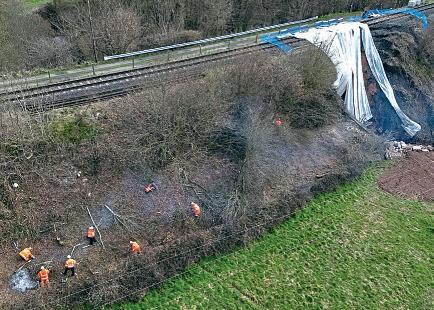
SVR volunteers clearing vegetation on the damaged embankmentat Mor Brook. GARYESSEX
programme of works,and we will provide an update on this in due course,” said Mr Bond “Clearly at this stage,itis impossible to pin down afinish date.This will depend on many variables,such as the weather, procurementofmaterialsand gaining statutoryapprovals.Itis
unlikely to be completed before the middle of the summer and it could be later, depending on these variables”. As work continues on the landslip,the SVR’s remaining 12 mile stretch between Hampton Loade and Kidderminster is fully operational.

TheSevernValley Railway ’s Easter Weekend Steam Gala sawthe twoErlestoke Manor Fund locos Nos. 7802 Bradley Manor and 7812 ErlestokeManor in operation together forthe first time since 2017 following their respectiveoverhauls. To recognise the last months of ex-GWR ‘Manors’onthe Cambrian lines in 1965, atime when both Nos.7802 and 7812 were active, No.7802 wasturned out in 1965 condition as a special arrangementfor this eventonly.The pair arepictured making a finesightastheyleave BewdleyonApril 21.
EMF/MARTIN CREESE
AS this issue of TheRM went to press,GBRailfreight said it was preparing to reintroduceits fleet of convertedKEA wagonsto traffic following their temporary withdrawal on safetygrounds, writes GraemePickering Previously boxwagons for
the movementofaggregates and scrap metal,their sides were reduced in heightfor their new role of carrying steel slabs
They were utilised on GBRf ’s servicebetween Portbury Docks and Port Talbot when it launched on March3 (see
Freight, page 71), but removed from servicedayslater.
DBCargo,which also runs slabtraffic to the steelworks, stepped in to operatethe serviceinthe meantime
AGBRf spokesman did not specify whatsafetyissues there
had been but explained to The RM thatithad decided to delay restarting its Portbury-Port Talbot trains while “further assurance checks”were undertaken and it expectedthe servicewould recommence“in the coming days”.













































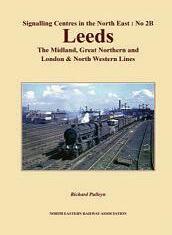








Theoriginal Locomotion No.1forms par t of aHopetowndisplaycelebrating railway pioneers alongside replicas of Richard Trevithick ’s Penydarren andJohn Buddle andWilliam Chapman’s Steam Elephant
FIGURES who led the wayin the developmentofsteam locomotives during the early 19th centuryare celebrated in an exhibition at Hopetown Darlington, which brings together Locomotion No.1 and replicas of Penydarren and Steam Elephant in the Grade II listed former Stockton &Darlington Railway Carriage Works
“The whole idea wastotell the storyofthat20years of engineering before1825 and Ithink they reallyrepresent that,”Alison Grange,collections engagementmanager for HopetownDarlington, told TheRM.“ Thelighting has helped us to displaythem in a really unique waythatpeople probably haven’tseen before.”
Railway Pioneers,which runs until June 22, is partof the nine-month S&DR200 festival across County Durham
and Teesside and examines the rapid refinementin locomotiveengineering and the innovations which inspired George Stephenson.
Locomotion No.1ispartof the National Railway Museum collection and its temporary relocation to Hopetown brings it back to Darlington, its postpreservation home forover160 years,for the firsttime since it wasmoved to Shildonin2021
It wasdesigned by Stephenson and driven by him on the opening dayofthe S&DR on September 27, 1825.
This was, however, 21 years afterRichard Trevithick’s Penydarren completed what is credited as the first journey in the world to be made by a steam locomotive,travelling nine miles from the ironworks at Penydarren in South Wales to the Merthyr-Cardiff Canal.The
HS2Ltd,Network Rail and the ScienceMuseum Group have agreed adeal thatwill see a 150-year-old bronzestatue of RobertStephenson loaned to Locomotion forthe next 10 years.The statue waspreviously at Euston but wasremoved in October 2020 as partofthe station’s redevelopment.
Robertwas the son of ‘the father of the railways’ George Stephenson, but is regarded as one of the greatest engineers of all time in his ownright. The statue wascommissioned by
the Institution of Civil Engineers following Robert’sdeath in 1859,and waserected at Euston in 1871
It hasbeen fixedinto placeoutside themuseum at Locomotion oppositethe Gaunless Bridge, whichwas designed by his fatherGeorge in 1823 forthe Stockton & Darlington Railway
■ Chesterfield’s Holy Trinity Churchhas received a£240,000 grantfromthe National Lottery Heritage Fund foraprojectto honour the legacyofGeorge

Locomotion No.1 has returned to Darlington forthe RailwayPioneers exhibition at Hopetown, displayedalongside replicas of twoother early locos – Steam Elephant and Penydarren GR AEME PICKERING
replica on displayatHopetown wasbuilt in 1982 and has come from the National Waterfront Museum in Swansea.
Steam Elephant sits in the middle of the exhibition’s time frame,11years after Penydarren and adecade before Locomotion No.1
It wasdesigned and built by JohnBuddle and William Chapman forthe Wallsend Waggonwayonthe north bank of the Tyne and is represented by Beamish Museum’s
2001-built replica.
“You can see the transition of the designand the engineering prowess behind them from Penydarren,through Steam Elephant to Locomotion,” said S&DR200 director NicciHallifax.
Railway Pioneers is the first of twomajor S&DR200 exhibitions to be held at Hopetown. Thesecond,STEAM to theFuture, in partnership with Hitachi, Network Rail and LNER, is duetorun from July11 to October 5.



Stephenson, who is buried there. With additional support from train operators EMR and CrossCountry, the projectwill
exploreStephenson’s lifeand engineering achievements,as well as the wider industrial historyofthe Derbyshiretown.
Middleton talks
THE MiddletonRailway in Leeds is holding aseries of Railway 200 talks at its Moor Road headquarters Admission is from 5.45pm for abuffet meal andatrip on the line,then the talks begin at 7pm to approximately 8.15pm each evening
May17will see Ian Smith presentMiddleton Railway –APreser vation Pioneer;June 21 will be AnthonyDawson covering Blenkinsop,Murray and Leeds Loco building; then July 19 will be Dr Michael Bailey and The1811 Model of Salamanca, whatthe CT scan revealed.
Formoredetails,see www.middletonrailway.org.uk.
Greatest Gatheringgrows MORE exhibits have been announced forthe sold out Greatest Gathering eventat Alstom DerbyonAugust 1-3. Joining those already announced,and subjectto availabilityatthe time,will be diesels Nos. D8568, D821, 44004, 46045, 47715, D1015, D1062, 66004, 67005; electrics Nos.83012, 85006, 90040, 92011 and EMU No.323221; and steam Nos. 13268, 6023, and 4930.
■ Ongoing to June 22
HopetownDarlington
Railway Pioneers,an exhibition looking at the engineering innovation that inspired George Stephenson.
■ Ongoing to Januar y2026 NRM York
Railway Firsts,a collection of well-known and unexpected stories thathaveshaped the railwaysand our histor y.
■ June 2- earlySeptember
Various dates
Bluebell Railway Education (for schools) and Celebration (general public) events covering the past,present and futureofour railways.
■ June 27-October 1
Various locations

Exhibition Train –bookings nowopen to visit the Railway 200 train as it travels to more than 60 locations around the countr y. Seehttps:// railway200.co.uk/inspiration forhow to book







Afestival of events across the Nor th East to celebrate200 years of the Stockton & Darlington Railway kicked off with the AllChange outdoor spectacular at Kynren in Bishop Auckland on March31, watched by 5000 people.The eventincluded this image of an LNER ‘Azuma’made up of lights fitted to 400drones flying in the nightsky.The drones also created images of aminer ’s lamp,arailway por ter, Locomotion No.1,and the S&DR200 logo
■ July 11-October 5
HopetownDarlington
STEAMtothe Future, reflecting on the histor yof steam railwaysand howthe rail industr yisgearing up for asecond revolution driven by green technologies.
■ August 1-3
Alstom Derby
TheGreatest Gathering Works open days SOLD OUT
have announcedplanstorival
By Keith Fender
SEVEN potential competitors to Eurostar operating international services from London viathe Channel Tunnel have emerged in recent months.
At least three –all startup companies –havestartedthe process of agreeing access to Temple Mills depot,involving the OfficeofRailand Road under Section 17 of the Railways Act1993.
Thethree start-ups that appear most advanced in their plans areSpanish firm Evolyn, set up by investors who also part ownMobico (formerly National Express); anew Virgin Group companycalled VTEHoldings, led by former Virgin (and Avanti) West Coast MD Phil Wittingham; and most recently Gemini Trains, with former BBC journalist Adrian Quine as CEO and former Eurotunnel manager Lord Tony Berkeley as chairman.
In addition to these three,
another start-up firm basedin the Netherlands called Heuro Trains announced its plans for services to London back in late 2023,while the national rail operators in Italy,Switzerland and Spain have all announced the ambition of runningtrains to London.
In the case of Italian state rail holding companyFSItaliane Group (owner of operator Trenitalia), ajointventurewith Evolyn wasannounced in early April to startservicestoLondon by 2029. This meansEvolyn, of all the new entrants,isprobably nowinthe strongest position,as it has access to up to €1 billion of investmentfunding, plus the high-speed know-howof Trenitalia. Evolyn has previously announced plans to buy 12 ‘Avelia’trains from Alstom, but this order has yettobe confirmed.
Both HS1 operator London St PancrasHighspeed (LSPH) and Channel Tunnel concessionaire
Getlink areoffering incentives to newoperators,ornew services from anyexisting ones, as both maketheir money from track access charges and per-passenger fees.Getlinkis offering around €50 million and has highlightedroutes from London to Frankfurt, Geneva and Bordeaux thatithopes to see startbefore2030. LSPH has proposed a£60 million incentiveplan to 2035, which is subjecttoagreementbythe ORR. In addition to this,the ORR recently reduced HS1 access charges by 5.9% forthe period 2025 to 2030.
Depot access
Access to Temple Mills depot, leased by Eurostar andopened in 2007 to house its fleet,has become the first ‘hurdle’for any new operator to overcome, as thereare no other UIC loading gauge depots in the UK and all new operators will use versions of existing UIC gauge




European high-speed trains
Eurostar has offered access to ‘sparecapacity’ to other operators at Temple Mills forseveral years,but has not agreed terms with any of the new entrants,some of whom want to undertake significantmaintenancework at the site. An independent study established thereis some capacityatthe site, but not enough forall three new operators,who between them have askedfor accesstofiveof the depot’s eightmaintenance
tracks plus stabling forupto18 of the200 metre-long trains everynight.
Whether anyofthe prospectiveentrantswill actually operatetrains is unclear,although less intensive operations could be possible Swiss Railways(SBB) has starteda tender foranew generation of high-speed trains to be in serviceinthe 2030s.These could run in pairs daily to andfromLondon using diagrams thatstartand end in either Switzerland or France.
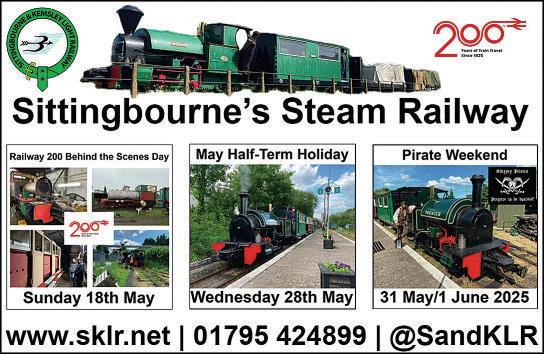
More ‘Voyagers’
NEWTON Abbot MP Martin Wrigley asked about discussions between the DfT and Crosscountrytrains on increasing capacity.
Mr Lightwood replied: “The Departmenthas funded 12 additional ‘Voyager’trains (60 carriages) forthe CrossCountry network.Three trains are already in servicewith the next one due to be broughtinto serviceinApril.The remaining eighttrains aredue to enter servicewith CrossCountryin May.
“This will increase the ‘Voyager’train fleet and enable CrossCountrytoprovide many moreseats on its network, including the Edinburgh to Plymouth route.”
Passengers assisted STOCKPORT MP Navendu Mishraasked if the DfTplans to improvePassengerAssist servicefor rail users.
Mr Lightwood said: “We have recently invested over £10m to enable theRail DeliveryGroup to deliver the next phase of the
Compiled by Jon Longman
Passenger Assist Improvement Programme “This 25-month programme will deliver aseries of improvements including the capabilitytobook a ticket,requestassistance and reserve aseatinasingle transaction. Importantly,itwill give customersthe ability to communicatedirectly with staff and provide adedicated help function on the Passenger Assist App.”
NOAH Law, the St Austell and Newquay MP,asked what steps the DepartmentofTransport (DfT) is taking to supportthe developmentofbatteryelectric trains and ensurethat those trains arebuilt using British critical minerals Simon Lightwood,the ParliamentaryUnder Secretary of Statefor Local Transport, said: “The Governmentis supporting the development of battery-electric trains as they areanintegralpartofthe plan to decarbonisethe railway network by 2050. This includes innovativeprojectssuchasthe


Greenfordfast-charge battery train trial,a batterytrial on a TransPennine Express unit,as well as the full deployment of multi-mode trains with batteries by Transportfor Wales and Merseyrail
“Weare progressing work on awhole systems approach to decarbonisation, ensuring both trackand train are considered.The Government published aCritical Minerals Strategy in 2022, which sets out its approach forensuring the securesupply of critical minerals forkey technologies including batteries.”
LORD Wigley asked what lessons Network Rail has learntfromthe accident near Llanbrynmair on the ShrewsburytoMachynlleth line in October 2024, andhow those lessons will be heeded throughout the network.
TransportMinister Lord Hendy replied: “The Rail AccidentInvestigation Branch (RAIB) launched an investigation into the fatal accidentatTalerddig in Powys,
on October 22, 2024, the day afterthe accident.
“Oncethe investigation is complete, RAIB will publish an investigation report, which will highlightany recommendations or learning points.Weexpectthe relevant parts of the industry, including Network Rail,toact on any recommendations resulting from RAIB’s investigation.”
Hinckleyblow
LORD Berkeley wanted to know whatplans the DfThas to increase the volume of freightcarried by rail,following the decision to refuse permission forthe building of the Hinckley National Rail FreightInterchange.
Lord Hendy replied: “The Governmentcontinues to supportmodal shiftfromroad to rail through the Mode Shift Revenue Supportscheme, which we have extended to at least March31, 2026.
“Asstatedinour consultation documentonproposals to reform our railways, therewill be astatutorydutyonGreat British Railwaystopromotethe
use of rail freight, alongside agrowth target set by the secretaryofstate
“Wewill also include safeguards to ensurethat freightoperators continue to receivefair access to the network.Both Government and GBR will work with the rail freightindustryonfurther actions to supportgrowth.”
forall BEXLEYHEATH and Crayford
MP Daniel Francis asked the DfTtoensurethatGreat British Railways(GBR) has astatutory accessibilityduty.
Mr Lightwood confirmed: “Accessibilityisapriorityfor this Governmentand we arecommitted to delivering arail system which allows disabled people to travel easily, confidently and with dignity.
“The ongoing RailwaysBill consultation is already clear thataccessibilitywill be central to GBR. GBRwilltherefore be subjecttorequirements to ensurethis happens.That includes requirements relating to accessibilityand engaging accessibilitystakeholders.”
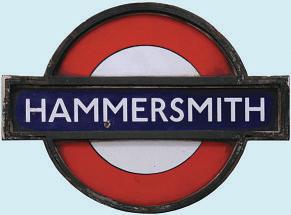

Extensions completed to thesouthern por tal of the ChilternTunnel, which will help dissipate micropressure wavesfromhigh speed trains.
CONCRETE extensions featuring ventilation holes have been completed at the southern portal of HS2’s10-mile long Chiltern Tunnel,toeliminate sonic booms caused by trains entering it at high speed.
When trains go into atunnel, they forceair forward, causing areleaseinpressureatthe far end of thestructure.Such micropressurewaves areless noticeable on conventional railway routes,but on lines wheretrains travel at higher speeds,this createsasonic boom, heardasadistinct‘crack’ or ‘thud’.
As HS2 will have amaximum speed of 225mph, amethod of dissipating the pressure and thereforepreventing the noise wasincorporated into its construction.
Both the designoftrains (as seen with the elongatednoses adopted forsome of the fastest and morerecentexamples aroundthe world,including the H5 series Shinkansen in Japan) and tunnelscan reducethe build-up of air pressure. In the case of HS2, perforatedportal
extensions form partofthe construction of all eight tunnels which trains will enteratspeeds over 140mph.Drawing upon fivedecades of international research, HS2 Ltd’sin-house engineering team, working with consultancy Arup,the University of Birmingham and Dundee Tunnel Research, developedand laboratorytestedadesignfor tunnel portal extensions.
“HS2 wasdesigned from the ground up as an entirely new and completerail system This enabled us to develop all its constituentparts to complementeach otherand operateas intended,” said HS2 Ltdchief engineer Mark Howard “Inthe case of avoiding sonic boom at tunnel portals,weused already-established keycriteria including train speed,tunnel diameter and length to develop tunnel portal extensionsthat would preventsonic boom occurring.”
HS2 Ltdsaysthe designcan be adapted to different lengths, and the longer the extension,

Thepor tal extensions at the southern end of the10mile long,twin-bore ChilternTunnel, northofDenham in Buckinghamshire, areseen while under construction. Although the longestextensionisfor the nor thbound bore(left), to dissipate micropressurewaves fromtrains enteringthe tunnel,a shor terone (right) will help reducethose caused by southbound trains.The M25can be seen in the background. HS2
the weaker the micropressure wave becomes.Although too weak to cause the kind of noise which would be expectedon HS2, measurementofmicro pressurewaves on HS1between London and the Channel Tunnel

: Concreteliningsegments to completethe last of 4217 tunnel rings on thesecondboreofthe fivemile longNor tholt Tunnel West areseen being installed by tunnel boring machine Caroline,which completed its work on April 3. LaunchedatWest Ruislip in October 2022, its break through, beneath the ventilation shaft at Green Park Way, Greenford, came lessthana month afteranoperation to winch counterpart Sushila,which drove the first bore, back to thesur face. Completion of walkways,cross passages and the trackbedare the next stages of work.Like Sushila, Caroline enteredareception canfilled with foam concretewhich will be depressurised oncesealant hasbeen applied to the tunnel lining to preventwater ingress.Itwill also be liftedback to ground levelthrough the shaft, as will the pair of TBMswhich aredue to breakthrough from theopposite direction on completion of Nor tholt Tunnel East laterthisyear. HS2
nevertheless formed auseful benchmark in deciding how long the portal extensions should be.
“They arelonger than any existing portals anywhere else in the world as we have prioritised seating capacityon the train,avoiding the need for along nose section on the train likethe Japanese Shinkansen,” explained Arup fellowRichard Sturt, who specialises in engineering analysis
“Theportals’unique tapered designcombined with the precision-sized holes provide an incredibly smooth build-up of pressureasthe train enters the tunnel.Asa result,therewon’t be anyaudible noises from
micropressurewaves,despite the extremely high train speeds.” Trains will reach the Chiltern Tunnel while travelling at 200mph and pass through it in just three minutes.Although this is not the fastest stretch of line,the combination of the tunnel’s length and that sustained speed,along with its surroundings required an extension designwhich is unique to it.Protruding 220 metres (240 yards) from the portal at their longest point, each of the southern extensions arepunctuatedalong their outer side with ventilation holes
Work to create near-identical structures at itsnorthern end is nowunderway.










An early postcard viewofthe LNER’s Zeebrugge train ferr y ber th at Har wich which, although taken out of use in 1987, sur vives todaylisted GradeII forits links to the First World Wareffor t.

Dr Joseph Brennan brings our series covering Britain’s railway history intothe 20th century, when theimpact of theFirst World Warsaw railway amalgamation reachits most famous form as 120 separate companies weregrouped intothe ‘Big Four’.
INits February 1923 issue, this magazine famously coined thephrase‘TheBig Four’inreference to theRailwaysAct 1921, whichstatedhow Britain’srailwayswere to be amalgamatedintofourgroupswith theaim of improving efficiency andreducing costsfollowing theend of theFirst WorldWar.
TheGovernment hadtaken over controlof therailway networkvia aRailway Executive Committeeatthe startofthe warin1914, usingprovisionsset outinthe Regulation of theForces Act1871. Railways at thetime were characterisedbyintense rivalrybetween competinglines in some partsof thecountry –anarguablyunnecessary extravagance of coverage that wouldlater become untenable as well
As economics professorAlzadaComstock set outina 1952 paper(whichprovidesa background to thenationalisation of British transportafter theSecondWorld War),the 120 separately-operating companiesthatfound
themselves underGovernmentcontrol in August 1914 “had grownupina rather helterskelterfashion”and,though“outstanding” in termsofspeed andpunctuality,somehome truths were exposed.
“Atthe endofthe waritwas plainthatthe controloperationshad pilednew difficulties andcomplexities upon thosewhich the multiplicity of operatingcompanieshad alreadyproduced,”Comstockwrites. “These hadbeenignored before thedemands of war traffictried thesystemtothe breaking point [and it]was nowrecognisedthatthe railway structuremustberadically reformed.”
Andradically reformed it was. Government controlended on August 14,1921but aMinistry of Transportsurveyin1920ofthe ‘financial problem’ andrelated matters of administration, ratesand wagesonthe railwaysystembrought to lightserious inherent defectsinthe system Corrective measures ledtothe 1921 Actand,in Comstock’s words, the“numerous,erratically
competingcompanies” were tamedinto just four from January1,1923.
Theage of four
The1921Act set outhow 120railway companieswould be merged into four regional groups,namely: theSouthernGroup (which became theSouthernRailway); the WesternGroup (Great WesternRailway); the NorthWestern,Midland,and West Scottish Group(London,Midland &ScottishRailway); andNorth Eastern, Eastern, andEastScottish Group(London &North EasternRailway). TheLMS wasthe largestat7216miles of iron road,followedbythe LNER with 6722 miles, theGWR at 3810 miles, andthe Southern with 2229miles
It is worthnoting, however, that Grouping didnot mean competitionwas eradicated.For example, theLMS competed with theLNER to serveEdinburgh andGlasgow,and with theGWR fortraffic in theWestMidlands. In